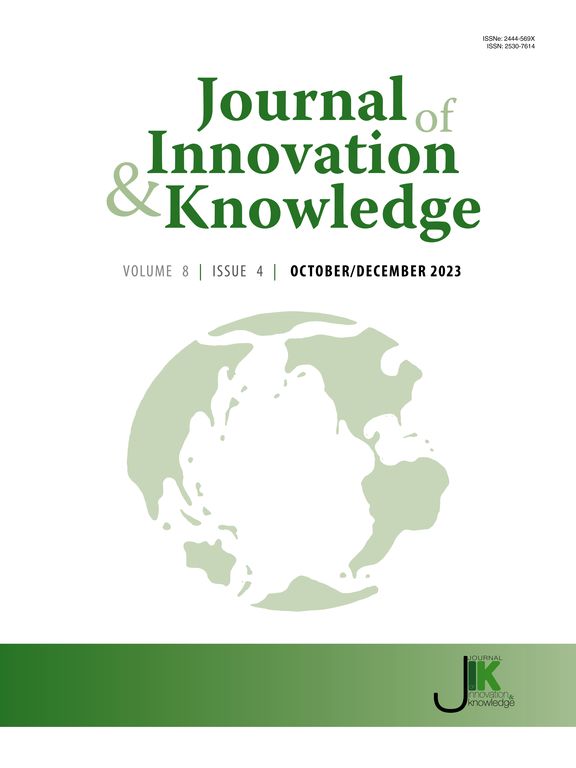Innovation capacity in urban agglomerations: The role of digital finance
IF 15.6
1区 管理学
Q1 BUSINESS
引用次数: 0
Abstract
Using panel data of 196 cities in 19 urban agglomerations in China from 2012 to 2021, this study analyzes the impact of digital finance on the innovation capacity of urban agglomerations and the underlying mechanisms. The level of digital finance development is measured using Peking University's Digital Financial Inclusion Index. Meanwhile, by manually sorting the relevant evaluation indicators in CSSCI journal papers, creating frequency statistics, and combining the total and average indices, innovation capacity is measured from five aspects: innovation resources, knowledge creation, innovation performance, innovation environment, and innovation collaboration. The results show that digital finance promotes the innovation capacity of urban agglomerations. This effect is stronger for small-scale, highly marketized, and polycentric urban agglomerations. Mechanism analysis shows that, first, via the agglomeration of innovation capital, digital finance provides financial support for improving the innovation capacity of urban agglomerations. Second, by improving entrepreneurial activity, digital finance promotes the formation of an innovation ecosystem. Third, by enhancing credit resource allocation, digital finance encourages more innovation funds to flow into innovative enterprises and promotes innovation capacity in urban agglomerations. Finally, economic policy uncertainty plays an “inverted N-type,” nonlinear moderating role in the relationship between digital finance and innovation capacity. In summary, by introducing digital finance as a key variable into urban agglomeration innovation research, this study expands the theory of financial and regional innovation systems. Next, demonstrating the heterogeneous impact of digital finance on different types of urban agglomerations, the findings can serve as a benchmark against which urban agglomerations can be compared to develop differentiated digital finance development strategies. Finally, the insights can inspire managers to re-examine the complex influence of economic policy uncertainty in the innovation process, which may help them make sound economic decisions.
城市群创新能力:数字金融的作用
本文利用2012 - 2021年中国19个城市群196个城市的面板数据,分析了数字金融对城市群创新能力的影响及其机制。数字金融发展水平采用北京大学数字普惠金融指数进行衡量。同时,通过人工整理CSSCI期刊论文中相关评价指标,创建频次统计,结合总量指标和平均指标,从创新资源、知识创造、创新绩效、创新环境和创新协作五个方面衡量创新能力。结果表明,数字金融对城市群创新能力有促进作用。这种效应在规模小、市场化程度高、多中心的城市群中更为明显。机制分析表明,第一,数字金融通过创新资本集聚,为提升城市群创新能力提供了金融支持。第二,通过提高创业活动,数字金融促进了创新生态系统的形成。第三,通过优化信贷资源配置,数字金融鼓励更多创新资金流向创新型企业,提升城市群创新能力。最后,经济政策不确定性在数字金融与创新能力的关系中起“倒n型”非线性调节作用。综上所述,本研究通过将数字金融作为关键变量引入城市群创新研究,拓展了金融与区域创新系统理论。其次,展示了数字金融对不同类型城市群的异质影响,研究结果可以作为比较城市群制定差异化数字金融发展战略的基准。最后,这些见解可以激励管理者重新审视创新过程中经济政策不确定性的复杂影响,这可能有助于他们做出合理的经济决策。
本文章由计算机程序翻译,如有差异,请以英文原文为准。
求助全文
约1分钟内获得全文
求助全文
来源期刊

Journal of Innovation & Knowledge
Multiple-
CiteScore
16.10
自引率
12.70%
发文量
118
审稿时长
37 days
期刊介绍:
The Journal of Innovation and Knowledge (JIK) explores how innovation drives knowledge creation and vice versa, emphasizing that not all innovation leads to knowledge, but enduring innovation across diverse fields fosters theory and knowledge. JIK invites papers on innovations enhancing or generating knowledge, covering innovation processes, structures, outcomes, and behaviors at various levels. Articles in JIK examine knowledge-related changes promoting innovation for societal best practices.
JIK serves as a platform for high-quality studies undergoing double-blind peer review, ensuring global dissemination to scholars, practitioners, and policymakers who recognize innovation and knowledge as economic drivers. It publishes theoretical articles, empirical studies, case studies, reviews, and other content, addressing current trends and emerging topics in innovation and knowledge. The journal welcomes suggestions for special issues and encourages articles to showcase contextual differences and lessons for a broad audience.
In essence, JIK is an interdisciplinary journal dedicated to advancing theoretical and practical innovations and knowledge across multiple fields, including Economics, Business and Management, Engineering, Science, and Education.
 求助内容:
求助内容: 应助结果提醒方式:
应助结果提醒方式:


